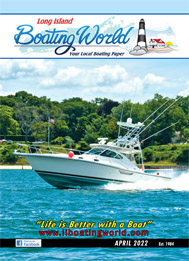
There are many reality shows and videos out there that depict the dangers faced by people who earn their living on the water. These cover lots of territory – crab season on the Bering Sea, lobstering in New England, or shrimping in the Gulf of Mexico. While the fisheries and working seasons may differ, a common thread runs through all of them. When emergencies arise, the Coast Guard is on everyone’s speed dial.
When distress calls go out from a sinking vessel, search and rescue crews dutifully climb aboard their Jayhawks in the middle of the night, putting their own safety in jeopardy to pluck half-frozen mariners from bone-chilling waters off New Bedford, Kodiak, or points between. They humbly fill this role of guardian angel 365 days a year, day or night, rain or shine. Despite facing adversities in the form of heavy seas and snow storms, rescue operations in this dangerous line of work sometimes face another risk that might not readily come to mind… risk from lawsuits.

This was shown by a case where a Florida federal court examined rescue efforts in which the Coast Guard came to the aid of a 63-foot fishing vessel. The incident took place in March 2015 in Florida waters. The 81-ton boat was returning home after being at sea for three days. She ran aground on a shoal somewhere north of Port Everglades Inlet. There was a small craft advisory in effect at the time, and the forecast included 4 to 6-foot seas and 15 to 20-knot winds, with occasional 8-foot seas.
There was a flood tide, with low tide roughly three hours prior to the mayday call. A small cutter, called the “33,” was on patrol for influence violations and was diverted to the location. Shortly afterwards, a 45-foot medium response boat was also dispatched. When the 33 arrived, its crew faced an important decision… how to get the crew of the stricken fishing vessel onto the 33.
The fishing vessel was listing to one side by now. Sea conditions were rough. In deciding how to transfer the crew of the stricken fishing vessel, the crew if the 33 had to take into consideration the likelihood of it capsizing, the heavy sea conditions, and potential hazard of debris in the water. Direct transfer was chosen due to the risks posed by jumping in the water. They felt that transfer should take place between the bow of the 33 and the stern of the stricken vessel.
The plaintiff’s account of the incident involved a crew member of the 33 standing in front of him telling him to, “Go, go, go” when it was his turn to board. But according to the Coast Guard crew member, he hadn’t issued such an order. He recalled having his hand up to indicate that the plaintiff should stand by. The plaintiff fell between the two vessels after jumping. At this point, he was on the bow of the 33, legs hanging off. A wave brought the stern of the fishing vessel down on him and crushed his pelvic area.
The 33 proceeded to Fort Lauderdale and the injured crew member was taken to Hollywood Memorial Hospital. The captain remained aboard the fishing vessel and safely got off when it washed ashore. When the crew who was injured in the transfer sued, the court held that the Coast Guard would not be shielded by governmental immunity. One of the cases examined by the court was DFDS Seacruises Ltd. v. United States, 676 F. Supp. 1200, which held there is no affirmative duty on the part of the Coast Guard to rescue. But the court also referred to another case, United States v. DeVane, 306 F.2d 186, where the Coast Guard has an obligation to use reasonable care in carrying it out once it undertakes the rescue.
In the end, the court ruled in favor of the Coast Guard. The court applied the Good Samaritan Rule. Under that rule, the rescuer would be liable if they were negligent under the circumstances and they worsened the position of the imperiled parties in distress. According to the court, the Coast Guard’s actions here did not worsen the injured plaintiff’s situation.
